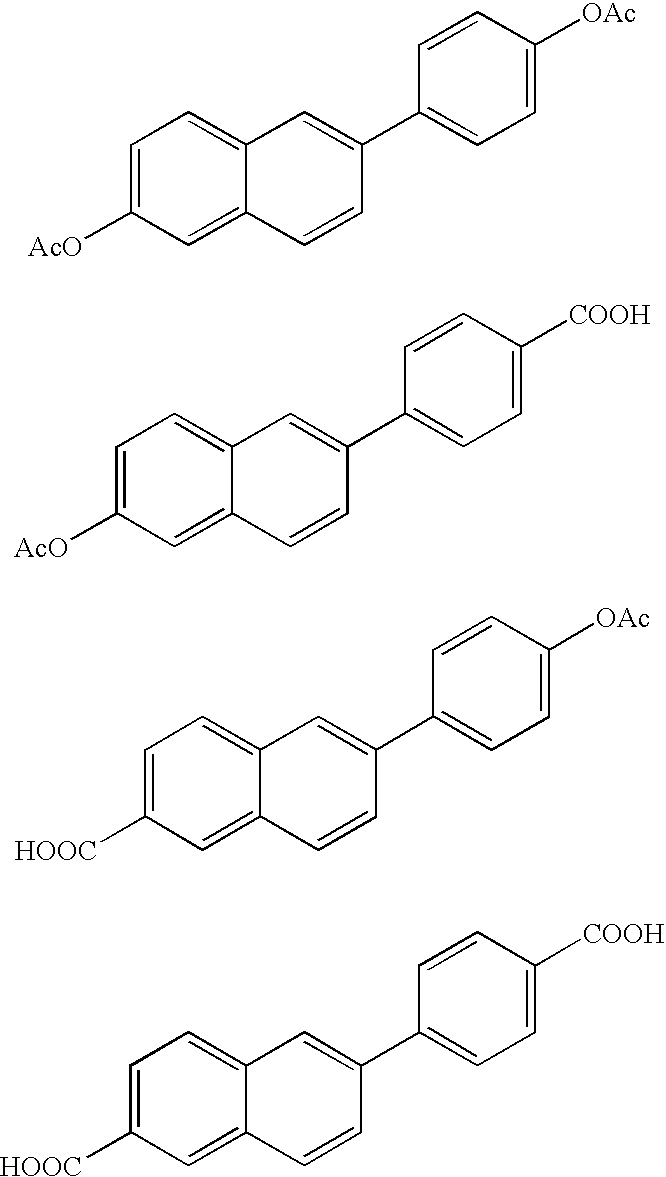Liquid crystal polymers
a liquid crystal polymer and aromatic technology, applied in liquid crystal compositions, chemistry apparatus and processes, organic chemistry, etc., can solve the problems of inability to find gpc data in literature, poor solubility of wholly aromatic thermotropic polyesters in normal organic solvents, and inability to meet the requirements of gpc data,
- Summary
- Abstract
- Description
- Claims
- Application Information
AI Technical Summary
Benefits of technology
Problems solved by technology
Method used
Image
Examples
Embodiment Construction
[0038]The wholly aromatic thermotropic LC polyesters of the present invention are composed of structural or repeating units of formula I, II, III, and / or IV.
[0039]
[0040]The repeating units may be derived from any monomer having the phenylene-naphthalene structure and appropriate substituents, including COOH / OAc, COOPh / OH, and COOCH3 / OAc. Acid / alcohol (COOH / OH) substituents are not considered appropriate, as reaction rates of such monomers are relatively low, and polymerization may result in a product that is contaminated with water. Particularly useful monomers are shown below. These are designated A-A, A-B, B-A and B-B, according to the acetoxy and carboxy substituents on the naphthalene and phenyl rings, respectively.
[0041]
[0042]The LC polyesters may include repeating units in addition to those above, including those derived from monomers such as 4-hydroxybenzoic acid, 2-hydroxy-6-naphthoic acid, 4-aminobenzoic acid, 4-carboxy-4′ hydroxy-1.1′-biphenyl, terephthalic acid, isophthal...
PUM
| Property | Measurement | Unit |
|---|---|---|
| melting point | aaaaa | aaaaa |
| melting point | aaaaa | aaaaa |
| melting point | aaaaa | aaaaa |
Abstract
Description
Claims
Application Information
 Login to View More
Login to View More - R&D
- Intellectual Property
- Life Sciences
- Materials
- Tech Scout
- Unparalleled Data Quality
- Higher Quality Content
- 60% Fewer Hallucinations
Browse by: Latest US Patents, China's latest patents, Technical Efficacy Thesaurus, Application Domain, Technology Topic, Popular Technical Reports.
© 2025 PatSnap. All rights reserved.Legal|Privacy policy|Modern Slavery Act Transparency Statement|Sitemap|About US| Contact US: help@patsnap.com



